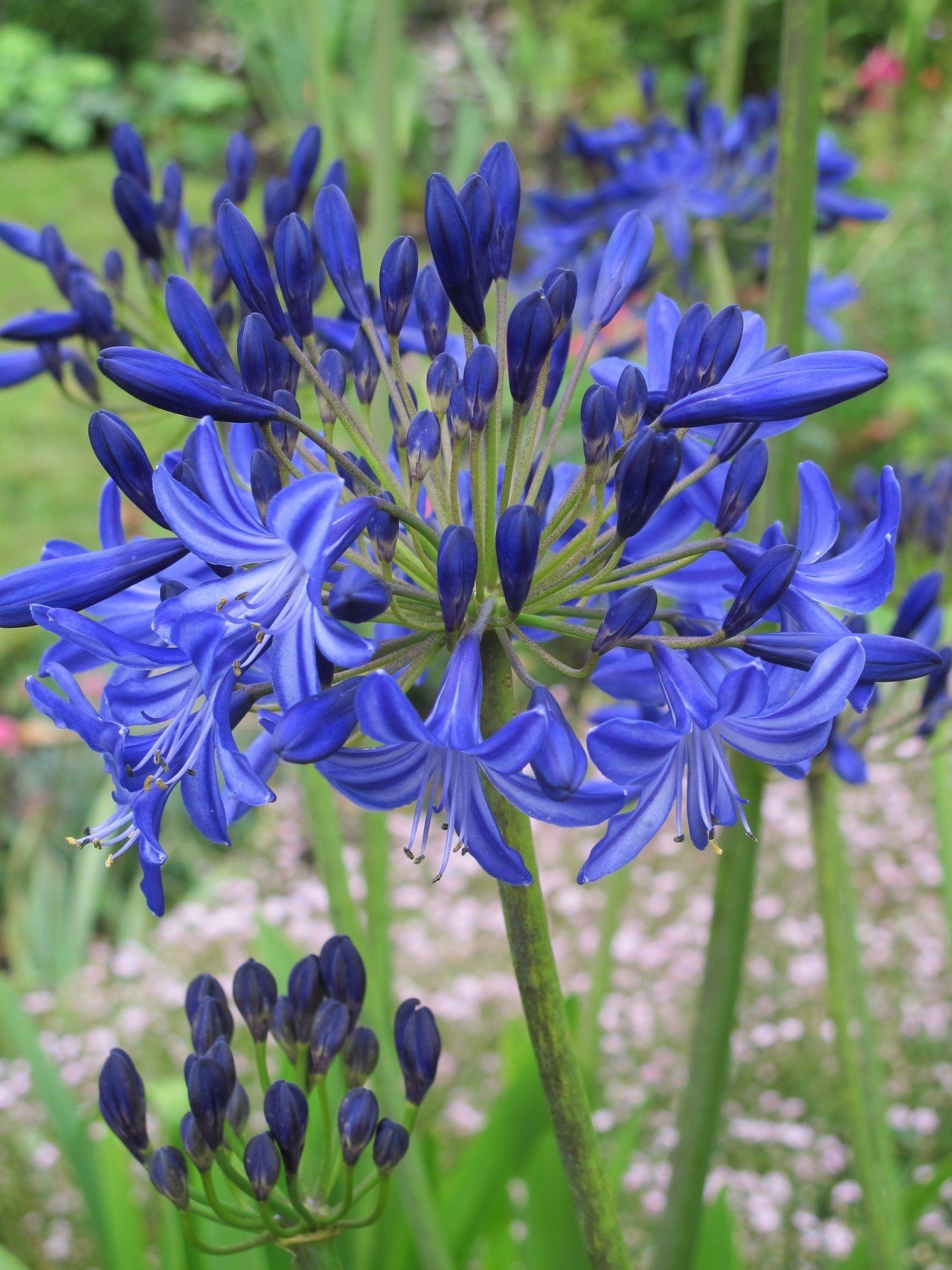Agapanthus Friend Plants: Perfect Pairings for Your Garden
Agapanthus Friend Plants: Perfect Pairings for Your Garden
Blog Article
Letting Loose the Secret to Effective Agapanthus Farming: Idea for a Flourishing Yard
In the realm of horticulture, growing agapanthus efficiently calls for a critical technique that encompasses different aspects of plant care. By recognizing the nuances of agapanthus cultivation, one can develop an environment where these plants thrive and bloom generously.
Growing Agapanthus: Finest Practices
When planting Agapanthus, correct dirt preparation is necessary for guaranteeing successful development and development of these stunning flowers. Agapanthus, commonly referred to as Lily of the Nile or African lily, flourishes in well-draining soil with a somewhat acidic to neutral pH degree - Agapanthus. Before growing, it is important to change hefty clay soils with natural issue such as compost or peat moss to boost drain and provide necessary nutrients for the plants
To plant Agapanthus, select an area that obtains complete sunlight to partial shade, as this will certainly advertise healthy development and abundant flowering. Dig an opening twice the diameter of the plant's origin ball and position the Agapanthus at the very same depth it was formerly expanding. Delicately backfill the hole with dirt, weighing down strongly to remove any type of air pockets around the origins.
Water the newly planted Agapanthus extensively and remain to keep the dirt evenly damp, especially throughout the plant's energetic expanding period. Agapanthus. Applying a balanced plant food once a month can better sustain the plant's development and flowering. By complying with these finest techniques for growing Agapanthus, you can develop a spectacular display screen of these captivating flowers in your garden
Suitable Soil Issues for Agapanthus
For ideal growth and flowering success of Agapanthus plants, guaranteeing the soil problems are excellent is critical. Agapanthus favors dirt that is rich in nutrients, so incorporating a well balanced plant food during the growing period can advertise healthy development and vivid flowers.

Watering and Fertilizing Tips
To guarantee healthy growth and vivid blossoms, appropriate watering and feeding methods are vital for successful Agapanthus growing. Agapanthus plants benefit from regular watering, specifically throughout the growing season.
When it concerns fertilizing Agapanthus, a well balanced fertilizer with equivalent components nitrogen, phosphorus, and potassium can be applied in the springtime to promote healthy and balanced development and blooming. Slow-release plant foods are excellent for providing nutrients progressively over an extensive duration. Prevent over-fertilizing, as this can lead to too much foliage development at the expense of blossoms.
In addition, incorporating natural issue like garden compost into the dirt can enhance nutrient degrees and enhance dirt framework, aiding in the overall health and wellness of the Agapanthus plants. By following these watering and feeding tips, garden enthusiasts can ensure their Agapanthus plants thrive and create stunning display screens of flowers.
Pruning and Deadheading Strategies
Proper trimming and deadheading techniques play a vital function in keeping the health and wellness and aesthetic appeals of Agapanthus plants, complementing the vital techniques of watering and fertilizing for successful farming. Trimming Agapanthus involves eliminating invested flower heads, yellowing or dead fallen leaves, and total shaping of the plant to promote better development. Deadheading, the procedure of getting rid of faded flowers, not only improves the plant's look but likewise urges further growing.
When deadheading Agapanthus, it is advisable to snip off the flower stem at the base utilizing sharp, tidy shears. This procedure reroutes the plant's power from seed manufacturing back into root and foliage growth, promoting a healthier and a lot more durable plant. Normal deadheading can extend the flowering period of Agapanthus and stop self-seeding, which can result in overcrowding.
In regards to trimming, Agapanthus normally gain from a light trim after blooming to clean up the plant and urge fresh development. Cutting down the invested flower stems and eliminating any type of dead or damaged foliage helps maintain the plant's vitality and overall look. Nonetheless, it is important to stay clear of cutting right into the crown of the plant, as this can damage its wellness.

Protecting Agapanthus From Pests and Diseases
Implementing reliable bug and illness management approaches is vital to safeguarding the health and vigor of Agapanthus plants in cultivation. Agapanthus are typically sturdy plants, but they can still succumb different pests and conditions otherwise correctly cared for. One usual insect that affects Agapanthus is the why not try this out Agapanthus borer, a caterpillar that passages into the plant, creating damage to the fallen leaves and flowers. To prevent problems, regular evaluation of the plants is vital. If borers are spotted, they can be by hand removed, or insecticidal soap can be made use of as a control step.
In enhancement to insects, Agapanthus are prone to illness such as root rot and fungal leaf spots. By remaining cautious and addressing pest and disease issues without delay, garden enthusiasts can aid their Agapanthus grow and prosper.

Conclusion
In verdict, successful farming of agapanthus needs correct planting strategies, optimal dirt conditions, appropriate watering and feeding, regular trimming and deadheading, and protection from diseases and bugs. By following these methods and pointers, gardeners can ensure a growing yard loaded with gorgeous agapanthus flowers. Agapanthus. Bear in mind to maintain consistent care and interest to information to advertise the wellness and durability of these sensational plants
When growing Agapanthus, correct soil preparation is necessary for ensuring successful growth and development of these stunning flowers.Water the recently planted Agapanthus thoroughly and continue to keep the soil uniformly wet, specifically during check out this site the plant's energetic expanding period.For ideal development and flowering success of Agapanthus plants, making sure the dirt problems are perfect is important. When hair transplanting or planting Agapanthus, make sure the soil is well-prepared to offer the required structure for the plants to develop themselves efficiently. One usual bug that impacts Agapanthus is the Agapanthus borer, a caterpillar article source that tunnels into the plant, causing damages to the blossoms and fallen leaves.
Report this page